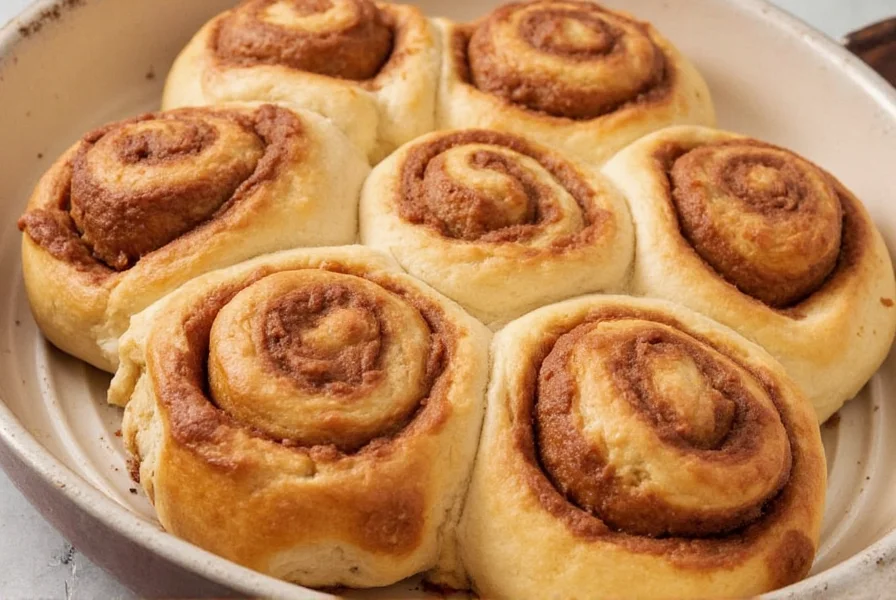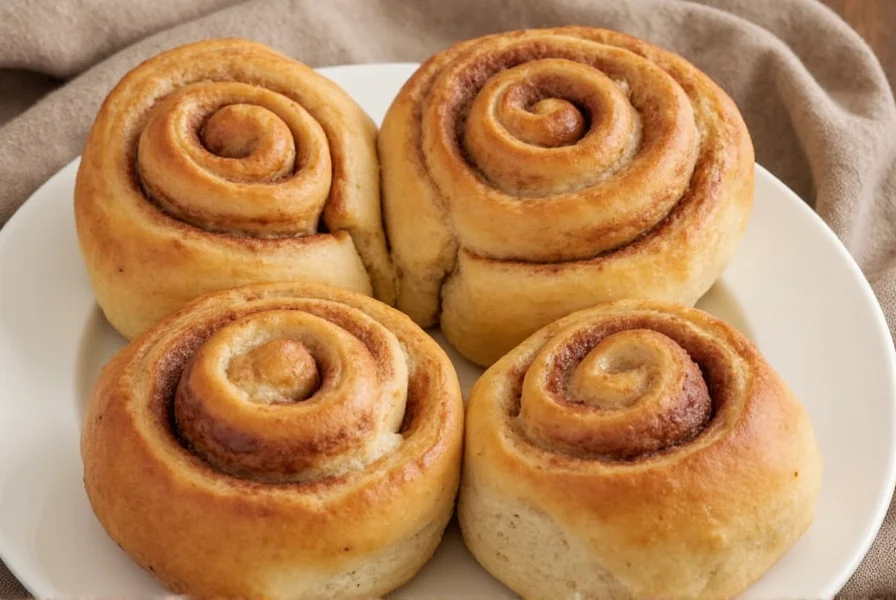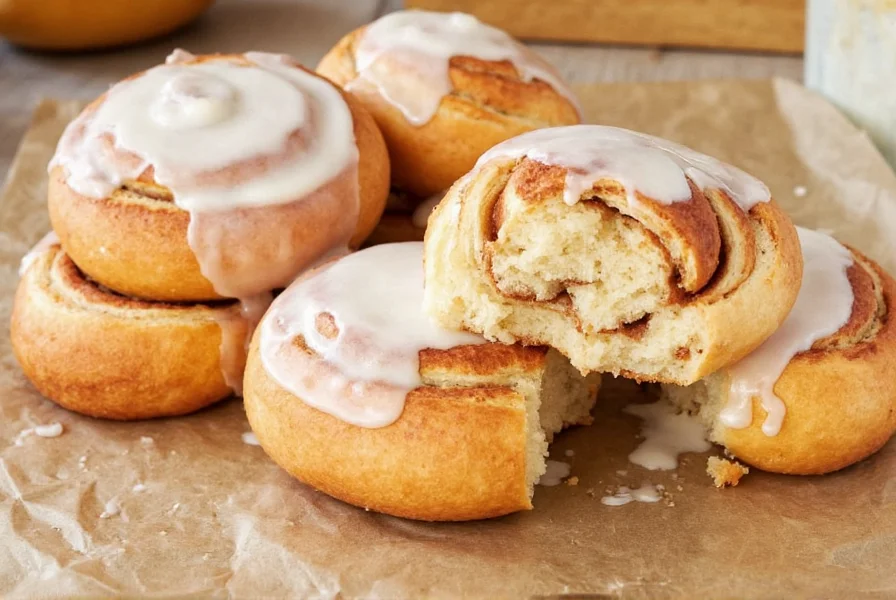There's something undeniably special about biting into a massive, gooey cinnamon roll that fills your entire plate. These oversized treats have gained popularity for good reason—they offer more of everything we love about classic cinnamon rolls: extra swirls of cinnamon sugar, abundant icing, and that perfect balance of fluffy dough and rich filling.
What Defines a Truly Huge Cinnamon Roll
While regular cinnamon rolls typically measure 2-3 inches in diameter, huge cinnamon rolls take things to the next level. The key characteristics that define authentic huge cinnamon rolls include:
- Size: Minimum 4 inches in diameter, often reaching 6 inches or more
- Thickness: At least 2 inches tall when baked
- Filling ratio: Higher cinnamon-sugar-to-dough ratio (typically 1.5x standard)
- Pan requirements: Requires specialized pans or careful adaptation of standard baking dishes
Professional bakers achieve these impressive dimensions through specific techniques that prevent the rolls from collapsing during baking—a common challenge when scaling up traditional recipes.

Essential Ingredients for Perfect Huge Cinnamon Rolls
The ingredient ratios for huge cinnamon rolls differ significantly from standard recipes. Getting these proportions right makes the difference between a successful giant roll and a collapsed mess.
| Ingredient | Standard Roll (per roll) | Huge Roll (per roll) | Key Adjustment |
|---|---|---|---|
| All-purpose flour | 1/4 cup | 3/4 cup | 200% increase |
| Cinnamon-sugar filling | 1.5 tbsp | 4 tbsp | 167% increase |
| Butter (dough) | 1 tbsp | 3 tbsp | 200% increase |
| Rising time | 1-1.5 hours | 2-2.5 hours | Extended for structure |
Notice that the filling increases at a higher rate than the dough. This compensates for the larger surface area that needs flavoring while maintaining structural integrity. The extended rising time allows the gluten to develop properly, preventing collapse during baking—a critical factor when making restaurant-style cinnamon rolls at home.
Step-by-Step Guide to Baking Huge Cinnamon Rolls
Follow these professional techniques to achieve bakery-quality huge cinnamon rolls:
1. Dough Preparation
Start with a slightly stiffer dough than you'd use for standard rolls. Add 2-3 tablespoons less liquid to create a more manageable consistency that holds its shape during the rolling process. Knead thoroughly until smooth and elastic—this extra gluten development provides the necessary structure.
2. Rolling Technique
When rolling out your dough for giant cinnamon roll recipe success:
- Roll to a rectangle measuring 12x18 inches
- Spread softened butter evenly, leaving 1/2 inch border
- Apply cinnamon-sugar mixture in a thin, even layer
- Roll tightly from the long side
- Use dental floss (not knife) to cut sections cleanly
3. Pan Selection Matters
The right pan makes all the difference when baking large cinnamon rolls. Consider these options:
- Muffin tin method: Use jumbo muffin tins (6 cups) for 4-5 inch rolls
- Cake pan approach: Bake multiple rolls touching in a 9-inch round pan
- Cast iron skillet: Creates crispy edges and beautiful presentation
- Specialty pans: Invest in dedicated huge cinnamon roll pans for consistent results

4. Baking Process
Huge cinnamon rolls require modified baking conditions:
- Start at 375°F for 15 minutes to set structure
- Reduce to 325°F for remaining 15-20 minutes
- Check internal temperature (190°F indicates doneness)
- Rotate pan halfway through for even baking
This two-stage baking process prevents the exterior from burning before the center cooks through—a common issue with oversized cinnamon roll baking tips.
Avoiding Common Huge Cinnamon Roll Mistakes
Even experienced bakers encounter challenges with huge cinnamon roll recipe attempts. Here are the most frequent pitfalls and how to avoid them:
Collapsed Rolls
Cause: Insufficient gluten development or over-rising
Solution: Extend kneading time by 3-5 minutes and reduce final rise by 20-30 minutes
Burnt Edges, Raw Center
Cause: Inconsistent heat distribution
Solution: Use the two-stage baking method and place pan on middle rack
Filling Leakage
Cause: Too much butter in filling or improper rolling
Solution: Use cooled melted butter (not liquid) and seal edges well when rolling
Serving and Storage Recommendations
Huge cinnamon rolls present unique serving challenges. For best results:
- Apply icing immediately after baking for optimal absorption
- Use a serrated knife for clean slicing through the icing
- Reheat individual portions in microwave (10-15 seconds) rather than whole roll
- Store leftovers wrapped tightly at room temperature for 2 days or freeze for longer storage
When reheating frozen huge cinnamon rolls, thaw overnight in refrigerator then warm in 300°F oven for 10-15 minutes—this preserves texture better than microwave methods for giant cinnamon roll recipe leftovers.











 浙公网安备
33010002000092号
浙公网安备
33010002000092号 浙B2-20120091-4
浙B2-20120091-4